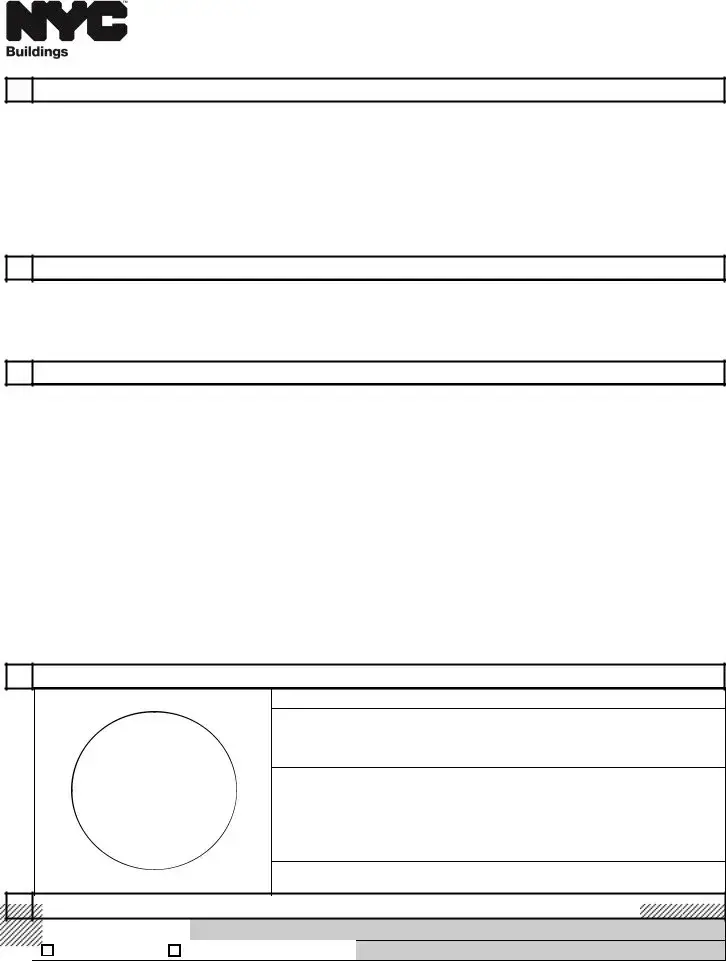The New York City Buildings Boiler Inspection Report/DEP Boiler Renewal Request (BO-9 form) can be compared to several other forms and documents used across different industries and governmental processes due to its multifaceted purpose, requirements for compliance, and renewal processes. One similar document is the Local Law 11/98 inspection form, which is utilized by building owners in NYC to report the condition of their building's exterior walls and appurtenances. Like the BO-9 form, the Local Law 11/98 form requires detailed inspection results and compliance with specific regulations, aiming to ensure public safety.
Another related document is the FDNY Certificate of Fitness application. This certificate is necessary for individuals responsible for carrying out specific tasks that may affect the fire safety of a building, much like how the BO-9 form addresses boiler safety and operational compliance. Both documents require the submission of detailed information and adherence to New York City’s safety regulations.
The Environmental Protection Agency’s (EPA) Renovation, Repair and Painting (RRP) Rule paperwork shares commonalities with the BO-9 form in terms of ensuring safety and compliance. While the EPA’s form is focused on the safe handling of materials that may contain lead in residential buildings and child-occupied facilities, both forms necessitate a detailed reporting of conditions and compliance with regulatory standards to protect public health and safety.
Similarly, the OSHA Form 300, which is used for logging work-related injuries and illnesses, parallels the BO-9 form in that both contribute to adherence to safety regulations. Although the OSHA form pertains to employee health and safety records, both documents are essential for regulatory compliance and maintaining a safe environment.
The Department of Buildings' (DOB) PW1 Plan/Work Approval Application is another document comparable to the BO-9 form, as it pertains to the approval process for construction and renovation projects within New York City. Both forms are integral to the city's building approval processes, requiring detailed information about the project or inspection and ensuring compliance with building codes and regulations.
Additionally, the NYC Health Department’s Permit to Operate a Mobile Food Vending Unit shares similar characteristics with the BO-9 form in the context of requiring health and safety compliance and renewal processes for operational authorization. Both documents ensure that operational standards meet specific health and safety criteria set by regulatory authorities.
The Certificate of Occupancy application process, which certifies a building’s legal use and compliance with building codes, aligns with the BO-9 form's objective of ensuring buildings meet certain safety and operational standards. Both processes involve inspections, detailed submissions, and are crucial for regulatory compliance within the city.
The Fire Department City of New York (FDNY) Application for Approval of Fire Safety Plans can also be juxtaposed with the BO-9 form. Fire safety plans are essential for outlining a building's strategy for evacuating occupants in case of a fire, similar to how the BO-9 document ensures the safe operation and maintenance of boilers within buildings.
Lastly, the Property Registration Form, required by the NYC Department of Housing Preservation and Development (HPD), bears similarities to the BO-9 form in that it requires property owners to register their properties to ensure they are managed safely and comply with housing regulations. Both forms play a significant role in maintaining the safety and compliance of properties within New York City.
